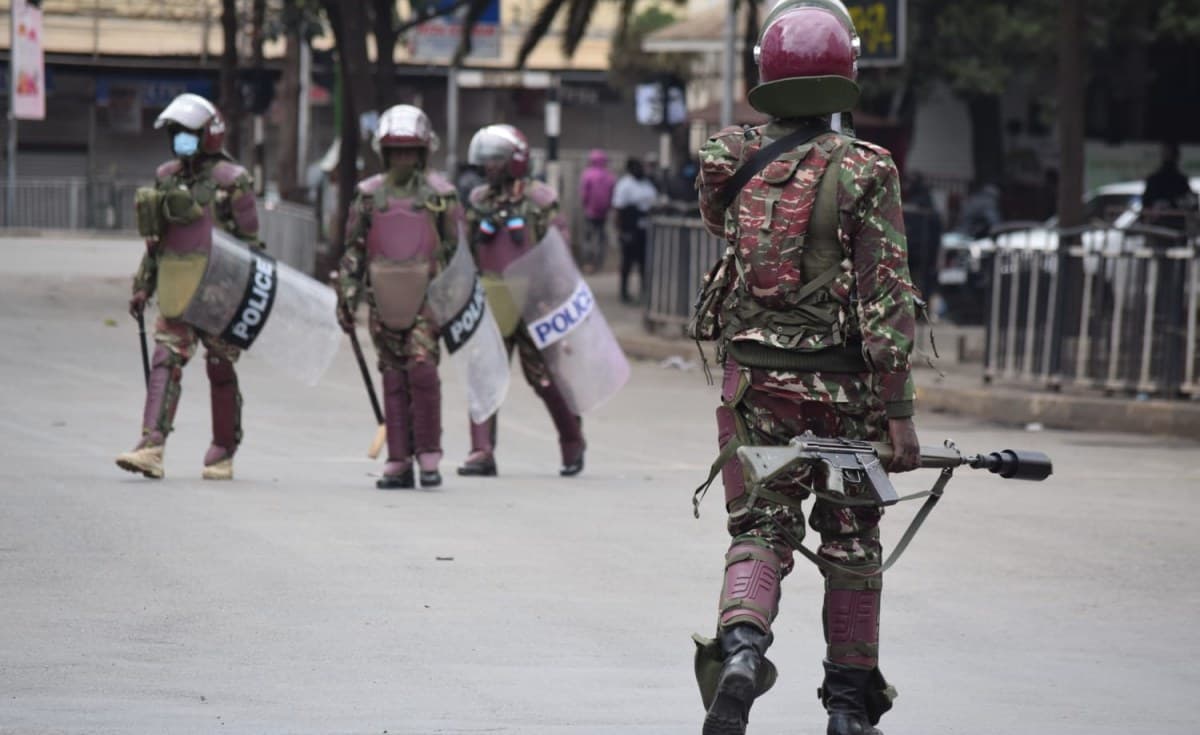Loading News Article...
We're loading the full news article for you. This includes the article content, images, author information, and related articles.
We're loading the full news article for you. This includes the article content, images, author information, and related articles.
A High Court ruling mandates police transparency, yet officers cite survival for concealing identities, deepening a national crisis of accountability and public trust.

NAIROBI – A tense standoff between judicial orders and security protocols is unfolding in Kenya, placing the public squarely in the middle of a contentious debate over police accountability. On one side, a definitive High Court ruling mandates that all officers on public duty must be clearly identifiable. On the other, security personnel, particularly in high-risk operations, argue that concealing their faces is a matter of life and death, a defence that resonates in a country battling terrorism and organised crime. This clash raises critical questions for Kenyans: where does the line between an officer's safety and a citizen's right to justice lie? And can a service sworn to uphold the law operate outside of it?
The legal basis for police identification is unambiguous. In a landmark ruling on Wednesday, August 14, 2024, High Court Justice Bahati Mwamuye ordered the Inspector General of Police to ensure all officers on duty are identifiable. The judgment explicitly directed full compliance with Paragraph 10 of the Sixth Schedule of the National Police Service Act, which requires uniformed officers to affix a visible name tag or service number. The court further declared that plainclothes officers must not use masks, balaclavas, or any other means to obscure their faces, a move hailed by accountability advocates as a major victory against impunity.
This ruling was prompted by an urgent application from the Law Society of Kenya (LSK), which argued that the use of unidentified officers, especially during the recent, often volatile, public protests, creates a climate of fear and makes it impossible to hold individuals accountable for misconduct. The LSK contended that numerous instances of police brutality, unlawful arrests, and even killings have been linked to officers whose identities were hidden.
Despite the court's clear directive, the reality on the ground remains complex. Security officers, speaking anonymously to the Daily Nation on Thursday, November 13, 2025, defended the practice of covering their faces, particularly those in specialised units like the Anti-Terror Police Unit (ATPU). They described operating in hostile environments where terror cells and criminal networks could target them and their families if their identities were revealed. “Remember, places like Lamu and parts of the Coast have witnessed ambushes, killings, and terrorist attacks. We must protect our identities... We are also human beings with families,” one officer stated.
This sentiment was echoed by Interior Cabinet Secretary Kipchumba Murkomen in a public forum on Monday, September 15, 2025. He defended the deployment of plainclothes and masked officers, stating it was a necessary measure to protect them in volatile situations. "We will not allow our police officers to put their lives in danger by wearing a uniform when they shouldn't be wearing a uniform," Murkomen said, suggesting that operational necessity could, at times, override standard protocols. This stance has been sharply criticised by the LSK as undermining the authority of the courts.
For human rights organisations and police oversight bodies, the issue is not about undermining security operations but ensuring they are conducted within the law. The Independent Policing Oversight Authority (IPOA) has repeatedly raised concerns about officers failing to display identification during protests, stating it obstructs investigations into misconduct and erodes public trust. In July 2024, IPOA Commissioner John Waiganjo publicly stated that police were "clearly breaking the law" by not displaying their service numbers, a practice he feared could enable a unit to "commit atrocities" without oversight.
The context for this debate is a history of contentious police conduct during public assemblies. Protests in 2024 and 2025 against new tax laws saw dozens of fatalities and hundreds of injuries, with many incidents involving officers in plainclothes or with their faces covered. Human rights groups like Amnesty International have documented numerous cases of excessive force where the anonymity of officers made subsequent investigations and accountability nearly impossible. The killing of protester Rex Masai, allegedly by an officer in civilian clothing, became a focal point in the legal challenge that led to the High Court's ruling.
International standards on policing generally align with the High Court's position. A 2016 United Nations report on the proper management of assemblies states that “Law enforcement officials must be clearly and individually identifiable, for example by displaying a nameplate or number.” The European Court of Human Rights has also ruled that the inability to identify officers can prevent effective investigation into alleged abuses, thereby violating human rights. The guiding principle is that visibility ensures accountability, professionalism, and public confidence.
As Kenya navigates this impasse, the fundamental principles of its 2010 Constitution, which sought to transform the police from a 'force' to a 'service' governed by transparency and accountability, are being tested. The judiciary has drawn a clear line, but the security apparatus, citing existential threats, appears hesitant to comply fully. For the Kenyan public, the presence of a masked officer remains a troubling symbol: is it a sign of a state protecting its citizens from unseen dangers, or a state shielding its agents from public scrutiny?